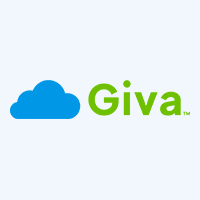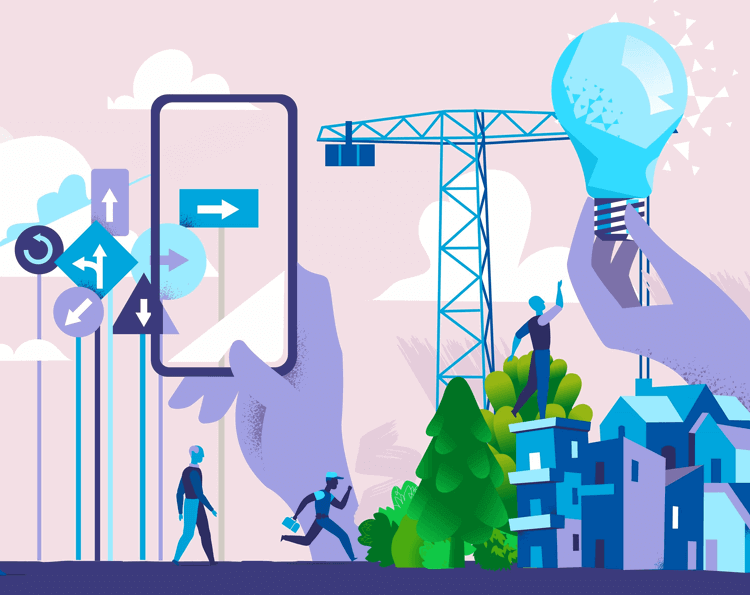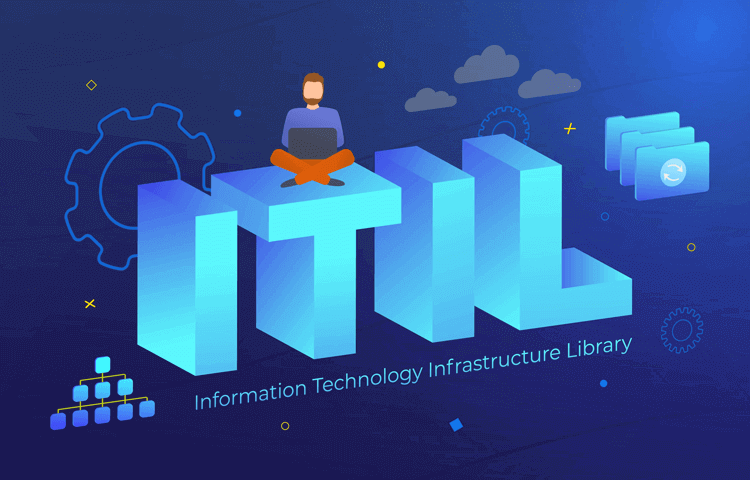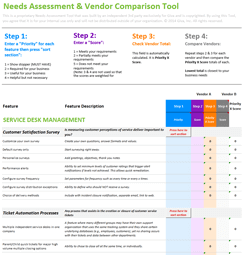Top 16 ITSM Trends for 2026: How to Build Smarter and More Resilient Service Management
As we enter upon and continue through 2026, IT Service Management (ITSM) continues to change faster than ever. Artificial intelligence, automation, and new security priorities are redefining how IT teams support their organizations.
What was new or experimental in 2025 is now part of everyday operations. CIOs and IT leaders are shifting their focus from trying new tools to building ITSM systems that are smarter, more resilient, and ready for constant change.
These are the macro-trends impacting ITSM in 2026:
- AI and Automation in ITSM
- Experience-Driven ITSM Changes
- Data-Driven Enhancements
- Hardware Environments
- Software Environments
- ITSM Security Changes
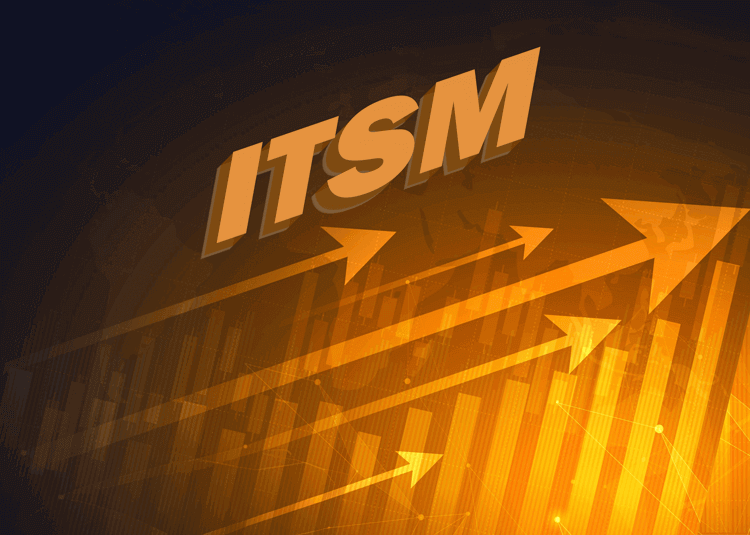
16 ITSM Trends for 2026
Here's a more in-depth look at the top 16 ITSM trends expected to change, or start changing the sector in 2026:
AI and Automation in ITSM
-
AI Agent Automation Goes Mainstream
AI agent automation is becoming part of daily IT operations and is no longer just a pilot project.
In 2026, most ITSM platforms come with built-in AI "Copilots" that summarize tickets, but now further, they suggest fixes, and even resolve simple issues before a technician gets involved.
This shift gives teams more time for complex work and helps organizations run more efficiently.
ITSM Benefits
- Reduced Ticket Volume: AI Agents take care of many simple requests on their own, so fewer tickets reach your help desk.
- Faster Resolutions: AI Agents guide technicians through the next best steps, helping them fix problems more quickly.
- Lower Costs: Automating repetitive work saves time and money while keeping service quality strong.
How to Apply/Implement
- Identify which Tier 0 (self-serve) and Tier 1 tasks can be automated safely.
- Choose ITSM software with built-in AI copilots or automation features.
- Track the results and make small adjustments as the system learns.
-
Enhanced AI Governance
As AI becomes part of nearly every IT process, clear rules are essential.
In 2026, both the EU and U.S. have new standards, such as the EU AI Act and NIST's AI Risk Management Framework, which are designed to keep AI use fair and responsible.
Strong AI governance is becoming a key way to balance innovation with accountability.
ITSM Benefits
- Lower Risk: Clear policies keep AI use safe and responsible, protecting data and reducing the chance of bias.
- More Transparency: Everyone can see how AI is making decisions, which builds trust with both users and teams.
- Better Accuracy: Regular checks and updates help AI tools stay reliable and fair.
How to Apply/Implement
- Write simple, clear policies about how AI will be used within your ITSM system.
- Audit AI tools on a regular schedule to confirm they're performing as expected.
- Gather feedback from agents and users to find where transparency can improve.
-
Generative AI-Powered ITSM Copilots
Generative AI is quickly becoming a core feature of modern IT service platforms.
These "copilots" help support agents draft responses, summarize incidents, and categorize tickets automatically.
Adoption is growing fast, but organizations are still learning how to use them effectively and safely alongside human teams.
ITSM Benefits
- Less Busywork: Copilots handle common questions and tasks so agents can focus on tougher issues.
- Quicker Responses: Suggested fixes and summaries speed up every stage of support.
- Sharper Focus: With more time for meaningful work, teams can deliver a better overall service experience.
How to Apply/Implement
- Start small by using copilots for basic requests like password resets or setup questions.
- Train agents to review and refine AI suggestions before sending responses.
- Measure ticket times and satisfaction scores to see the difference.
Experience-Driven ITSM Changes
-
Greater Customer Experience (CX) Focus for ITSM Teams
Now that AI handles most simple issues, the quality of human interactions matters more than ever.
In 2026, ITSM success is increasingly tied to how people feel about their support experience.
That applies not just to customers, but also to employees who rely on internal service desks.
ITSM Benefits
- Happier Customers: A more personal and understanding approach builds stronger, lasting relationships.
- More Valuable Work: Agents spend their time solving real problems instead of handling the same routine tasks.
- Better Reputation: Great experiences lead to higher satisfaction scores and stronger word-of-mouth support.
How to Apply/Implement
- Review NPS, CSAT, and employee feedback regularly to find improvement opportunities.
- Automate repetitive requests so agents can spend more time helping customers directly.
- Offer communication and empathy training alongside technical training.
-
Resilience-First ITSM
Reliability is becoming one of the most important parts of the IT service experience.
Customers and employees notice when systems go down, and they remember how fast they're restored.
That's why many ITSM leaders are focusing on "resilience," or "staying operational," as a key part of the overall experience, not just general goal.
ITSM Benefits
- Keeps the Experience Smooth: Reliable systems mean fewer interruptions for users and a better perception of IT performance.
- Builds Trust and Confidence: When issues happen, quick recovery reassures people that they're in capable hands.
- Reduces Stress for Teams: Preparedness and clear recovery steps make incident response calmer and more effective.
How to Apply/Implement
- Include resilience planning in your regular ITSM reviews and CX strategy.
- Add redundancy and backup measures for the services users rely on most.
- Run drills that focus on both technical recovery and communication with end users during downtime.
Data-Driven Enhancements
-
AI Used to Update Self-Serve Resources
AI-driven knowledge management is changing how ITSM teams handle documentation.
In 2026, more platforms are starting to automatically turn resolved tickets into new self-help articles.
That means faster updates and fewer repeat issues.
ITSM Benefits
- Always Current: AI keeps the knowledge base up to date automatically, saving time for IT staff.
- Less Strain on Support: Users can solve common issues themselves, which reduces call and ticket volume.
- Happier Users: Finding quick, accurate answers makes the support experience smoother for everyone.
How to Apply/Implement
- Add an AI plugin or workflow that converts solved tickets into articles or FAQs.
- Check that it connects properly with your ticketing and self-service tools.
- Review content periodically to make sure it's accurate and easy to understand.
-
FinOps and ITSM Integration
With cloud and AI costs growing fast, IT and finance teams are working more closely together.
Integrating FinOps with ITSM is becoming a popular way for leaders to see how service delivery affects costs and to make smarter spending decisions.
ITSM Benefits
- Clearer Costs: Linking ITSM with finance tools shows exactly how support activities affect spending.
- Smarter Planning: Knowing where money goes helps leaders decide what to automate or improve next.
- Better Team Alignment: IT and finance teams share data and goals, making it easier to work together.
How to Apply/Implement
- Add financial metrics to ITSM dashboards so you can see the cost of key activities.
- Meet with finance partners to define shared success measures.
- Use insights to optimize workloads for both performance and cost.
Hardware Environments
-
Faster, Energy-efficient Computing
AI and automation are creating new demand for high-speed, energy-efficient computing.
New hardware and smarter data centers are continuing to emerge, helping ITSM teams meet these needs while keeping energy use in check.
ITSM Benefits
- Stronger Performance: New processors and smarter systems make everything run faster and smoother.
- Greener Operations: Using energy-efficient hardware helps companies meet sustainability goals.
- Lower Expenses: Reduced power use means lower operating costs over time.
How to Apply/Implement
- Review your current infrastructure for equipment that's outdated or uses the most power.
- Upgrade to energy-efficient systems that meet your workload needs.
- Track power use and adjust workloads to improve efficiency.
-
Linking AI and Hardware in ITSM
AI is increasingly built directly into hardware, including everything from servers to IoT devices.
This combination allows real-time monitoring, predictive maintenance, and automated adjustments without waiting for manual input.
ITSM Benefits
- Prevents Outages: Smart sensors spot early warning signs so issues can be fixed before systems go down.
- Faster Reactions: Built-in AI helps systems detect and correct performance problems right away.
- More Uptime: Self-adjusting hardware reduces service interruptions and keeps everything running.
How to Apply/Implement
- Look for infrastructure with built-in AI monitoring or automation features.
- Connect IoT devices to your ITSM platform for better visibility.
- Train staff to understand alerts and performance data effectively.
-
Sustainable ITSM (GreenOps & Carbon Metrics)
Sustainability is now a growing focus in IT planning.
More teams are measuring the carbon footprint of IT services and adopting "GreenOps" practices to cut waste and energy use.
ITSM Benefits
- Greener IT: Tracking energy and carbon output helps teams make more eco-friendly choices.
- Easier Compliance: Clear reporting makes it simpler to meet sustainability standards.
- Positive Brand Image: Showing real progress on environmental goals builds public trust and loyalty.
How to Apply/Implement
- Include sustainability data in your regular ITSM reports.
- Work with vendors who support renewable energy or low-impact data centers.
- Add carbon tracking to your dashboards to measure ongoing progress.
Software Environments
-
Hyperautomation
Hyperautomation combines AI, robotic process automation (RPA), and low-code tools to simplify complex workflows.
In 2026, more ITSM teams are starting to use hyperautomation to connect systems and automate not only IT processes but also tasks across HR, finance, and other departments.
The goal is to reduce repetitive work, save time, and let staff focus on higher-value activities.
ITSM Benefits
- Simpler Workflows: Automating tasks across departments speeds up processes and reduces manual effort.
- More Flexibility: Low-code tools make it easy to adjust workflows when business needs change.
- Scalable Growth: Automation allows teams to handle more requests without adding more staff.
How to Apply/Implement
- Identify workflows that are repetitive or require multiple transfers between teams.
- Use low-code platforms or automation tools to connect those steps into a single, smooth process.
- Review results regularly and fine-tune automations for speed, accuracy, and user satisfaction.
-
Neurological Software Enhancements
AI models designed to mimic human thinking (sometimes called "neurological software") are starting to appear in research labs and pilot programs.
They're not ready for everyday ITSM yet, but they show how future systems could understand intent and context more naturally.
ITSM Benefits
- Smarter Insights: Advanced AI can understand patterns and suggest better solutions.
- Learning Over Time: These systems adapt to how people work and improve with continued use.
- Less Manual Oversight: Once trained, they can manage more tasks independently, freeing up IT teams.
How to Apply/Implement
- Keep an eye on vendors experimenting with cognitive or adaptive AI.
- Train your IT staff to evaluate how these systems behave and learn.
- Stay informed about upcoming enterprise-ready releases.
ITSM Security Changes
-
Safeguarding Against Disinformation
Deepfakes, AI-generated emails, and fake messages are becoming more sophisticated.
ITSM security strategies are now evolving to include tools and training that help identify misinformation before it causes real damage.
ITSM Benefits
- Cleaner Data: Early detection stops fake or misleading information before it spreads.
- More Confidence: Verified messages help users trust what they see and act quickly.
- Fewer Disruptions: Preventing misinformation keeps operations stable and avoids confusion.
How to Apply/Implement
- Use monitoring tools that can flag suspicious or altered content.
- Teach staff how to spot AI-generated messages and deepfakes.
- Set up a quick response plan for misinformation incidents.
-
AI Security and Zero Trust ITSM
As AI tools become part of everyday IT operations, they also become targets.
A Zero Trust approach is where every system and interaction must be verified, and it is becoming a common way to keep AI-powered environments secure. Some examples are confirming user identity or checking device health before access is granted.
It's about assuming nothing and validating everything, so even trusted systems must prove they're safe each time they connect or share data.
ITSM Benefits
- Stronger Defenses: Zero Trust principles protect AI tools from unauthorized access and misuse.
- Better Data Protection: Tight access rules keep sensitive information private.
- Reliable AI Results: Constant monitoring helps teams feel confident in the AI's output.
How to Apply/Implement
- Apply Zero Trust practices to AI integrations within your ITSM system, such as verifying user credentials, device compliance, or API connections before allowing access.
- Use monitoring tools to track unusual behavior or access patterns.
- Train teams on AI-specific security risks and how to manage them.
-
Post-Quantum Cryptography
Quantum computing is advancing quickly, and traditional encryption won't be enough forever.
That's why many organizations have already started switching to Post-Quantum Cryptography (PQC) based on NIST's standards.By 2026, this transition is well underway and continuing across ITSM environments that handle sensitive data.
ITSM Benefits
- Long-Term Safety: Quantum-safe encryption keeps important data secure well into the future.
- Meets New Standards: PQC supports the latest global security and privacy requirements.
- Future Ready: Upgrading early helps avoid bigger costs and risks later on.
How to Apply/Implement
- Identify systems that store sensitive data or handle user credentials.
- Begin updating those systems with PQC algorithms and tools.
- Train IT and security teams on how to manage the transition smoothly.
Key Takeaways: ITSM in 2026
ITSM in 2026 is more connected, intelligent, and resilient than ever before.
AI copilots, automation, and sustainability goals are reshaping how IT teams work, while new security standards are helping keep data safe in a continuously changing digital world.
The future of ITSM isn't just about technology but also involves building adaptable systems and teams that can grow and be successful no matter what comes next.
Giva Can Help Your Organization Stay Ahead of the Trends
Giva's AI-powered help desk and ITSM software include knowledge management and a self-service portal, which can help you bring knowledge base and self-service to the organizations you support.
Other Giva features include:
- Harness the power of Giva's AI Copilot to effortlessly refine responses and quickly access and format solution information
- Knowledge Base Copilot summarizes search results so agents and customers alike do not necessarily need to view each knowledge article for the information they are looking for
- Automatically convert emails into tickets to streamline the ticketing process
- Customize Giva for any department or subsidiary organization and deliver real-time agent and team analytics to help improve performance
- Provide your customers with the safety and security of Giva HIPAA/HITECH Compliance, included in all editions at no additional cost and covered by Cyber Liability Insurance Policy
To learn more, book a free Giva demo to see our solutions in action, or start your own free, 30-day trial today!
